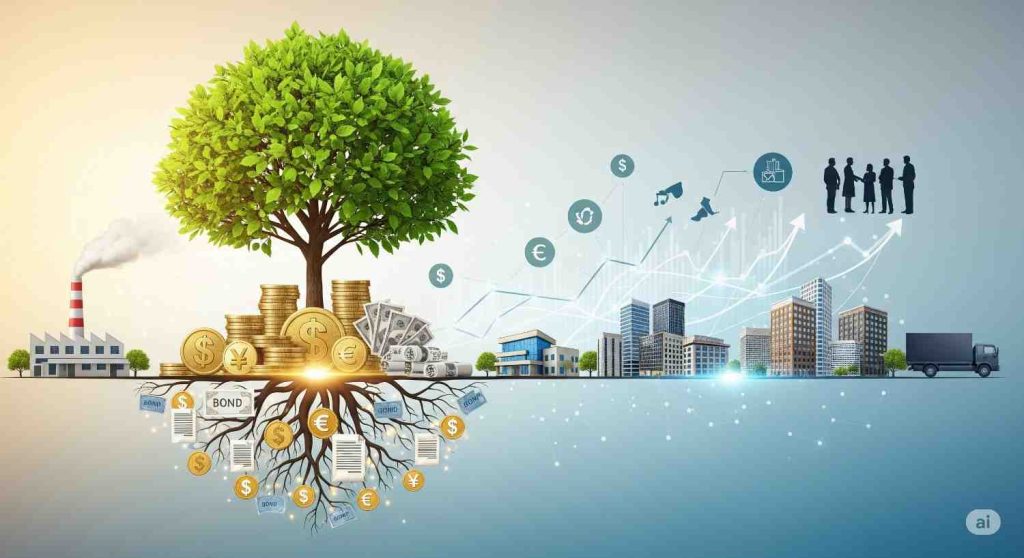Discover how Bank Financial Services in 2025 are driving economic growth through technology, financial inclusion, and innovative solutions that empower businesses and individuals.
Introduction
In 2025, Bank Financial Services remain a vital pillar of economic development. From facilitating business loans to promoting inclusion and funding infrastructure projects, banks are central to keeping economies moving. Technological advances, evolving customer expectations, and global trade opportunities are reshaping these services, making them more accessible, efficient, and impactful than ever before.
What Are Bank Financial Services?
These services include savings and deposit accounts, loans, investments, payment systems, wealth management, and risk protection solutions. They ensure money flows efficiently through the economy, creating a strong foundation for growth. Without them, business expansion, consumer spending, and infrastructure development would face major challenges.
Capital Formation and Business Development

Economic growth depends heavily on capital availability, and these banking services play a direct role in mobilizing resources.
- Small Business Loans: Funding for entrepreneurs and SMEs.
- Corporate Finance: Support for mergers, acquisitions, and expansion projects.
- Startup Financing: Partnerships with fintech enable flexible funding.
By channeling capital effectively, banks help spark innovation, create jobs, and boost GDP.
Financial Inclusion and Poverty Reduction
One of the most impactful roles of banking in 2025 is extending access to underserved communities.
- Rural Banking Programs: Bringing accounts, microloans, and insurance to remote areas.
- Digital Banking Apps: Enabling secure transactions without physical branches.
This access allows people to invest in education, healthcare, and small businesses, reducing poverty.
Infrastructure and National Development
Large-scale projects such as highways, ports, and energy plants require substantial financing. Banks provide long-term loans, syndicated funding, and bonds to fuel these developments, creating jobs and improving trade efficiency.
Encouraging Savings and Investment

Healthy economies need both consumption and investment. Banks promote savings through interest-bearing accounts and fixed deposits, while also offering investment products like mutual funds and bonds that direct resources into productive sectors.
Risk Management and Economic Stability
Risk management products — including insurance, credit assessments, and hedging tools — protect businesses and individuals from unexpected losses. This stability encourages calculated risk-taking, which supports innovation and expansion.
The Digital Transformation of Banking
In 2025, banking is more digital and customer-focused than ever:
- Mobile Banking: On-the-go transactions and investments.
- AI and Automation: Faster loan approvals and fraud detection.
- Blockchain: Transparent, low-cost cross-border transactions.
These tools make banking faster, safer, and more inclusive.
Boosting Global Trade
International trade relies on reliable payment systems and financing tools. Services like trade finance, foreign exchange, and letters of credit reduce payment risks, strengthening economic cooperation and global GDP growth.
The Multiplier Effect
Every deposit and loan in the system creates a ripple effect. Money is lent, invested, and reinvested, multiplying economic activity and impacting national income and employment levels.
Supporting Sustainable Economic Practices

In 2025, Bank Financial Services are increasingly aligned with sustainability goals. Many banks are introducing green financing options, such as loans for renewable energy projects, eco-friendly housing, and sustainable agriculture. By directing capital toward environmentally responsible ventures, these services not only foster economic growth but also protect long-term environmental health. This shift reflects a growing recognition that sustainable development and economic progress must go hand in hand.
Frequently Asked Questions (FAQ)
1. What are Bank Financial Services?
Bank Financial Services are the range of products and solutions offered by banks, including savings accounts, loans, investments, payment systems, wealth management, and insurance. They help individuals, businesses, and governments manage finances securely and efficiently.
2. How do Bank Financial Services contribute to economic growth?
By providing capital for businesses, encouraging savings and investments, promoting financial inclusion, and funding infrastructure projects, Bank Financial Services play a key role in driving GDP growth and creating jobs.
3. How has technology changed Bank Financial Services in 2025?
Modern Bank Financial Services are powered by mobile apps, AI, blockchain, and automation, which make transactions faster, reduce fraud, and improve customer convenience.
4. Can Bank Financial Services help reduce poverty?
Yes. Through rural banking programs, microloans, and insurance, Bank Financial Services enable underserved communities to invest in education, healthcare, and small enterprises, helping to reduce poverty.
5. What is the future of Bank Financial Services?
The future of Bank Financial Services will focus on digital innovation, sustainable financing, personalized solutions, and deeper integration with global trade to ensure inclusive economic growth.
Conclusion
In 2025, Bank Financial Services are far more than simple transactions — they are a driving force behind economic growth. By providing capital, fostering inclusion, funding infrastructure, managing risk, and embracing digital transformation, banks create the conditions for prosperity. As technology and markets evolve, these services will continue to shape economies, empowering individuals and businesses to thrive in a changing world.








